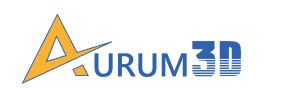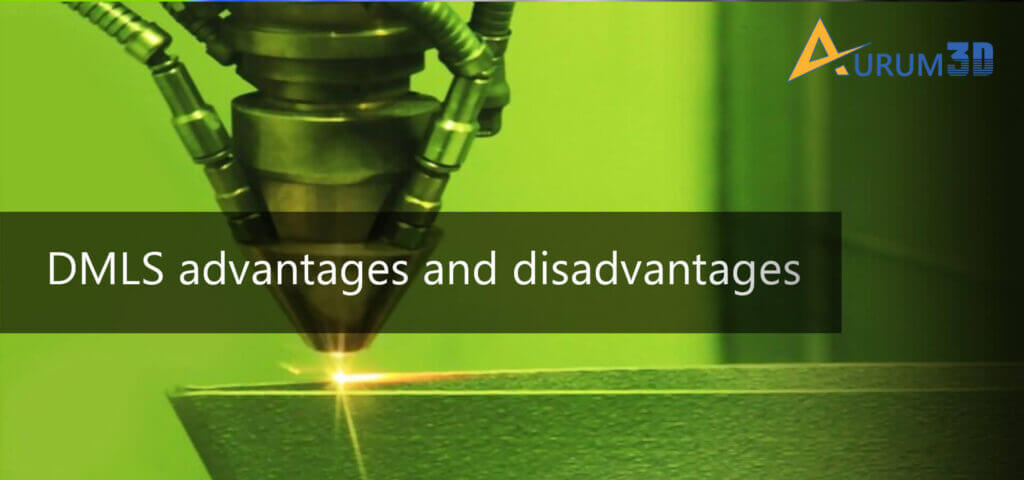While creating a part or prototype, you have the option to choose from several additive manufacturing technologies. Each additive manufacturing technique produces the part or prototype using fusing specific materials or filaments. Direct metal laser sintering (DMLS) is a widely used 3D printing technology that produces fully-functional production parts and prototypes using metal materials.
According to TechTerms.com,
“When creating a metallic object, a 3D printer may use a process called direct metal laser sintering (DMLS). This method forms thin layers of metal from metallic powder using a high-powered laser.”
Like other 3D printing technologies, DMLS prints solid three-dimensional objects layer by layer based on digital 3D models. But DMLS, unlike other 3D printing technologies, creates opportunities for engineers to produce parts using a variety of metal alloys. The DMLS printers spread thin layers of metal powder on the build platform. The metal powder is sintered selectively using a laser.
The laser makes DMLS effective in producing solid items without melting the metal powder. The sintering feature makes DMLS different from widely used metal additive manufacturing technologies like selective laser melting. At present, enterprises use DMLS for both rapid prototyping as well as mass-production of metal parts.
But you must remember that DMLS, like other metal additive manufacturing technologies, has its pros and cons. You can print superior parts or prototypes only by understanding major DMLS advantages and disadvantages. The understanding will help you to boost the metal 3D printing process by overcoming some of the important shortcomings of DMLS.
DMLS Advantages and Disadvantages
Here are the major Advantages of DMLS 3D Printing.
Wide Range of Metals
DMLS facilitates metal additive manufacturing by supporting a wide range of metals – aluminum, titanium, steel, stainless steel, cobalt chrome, nickel alloys, and precious metals. Hence, engineers have the option to choose from both pure metals and metal alloys according to the requirements of the 3D printer. Also, many companies have been launching new metal filaments to leverage the growing adoption of DMLS technology.
Direct Metal Printing
In addition to supporting a wide range of metal alloys, DMLS prints the metal parts or prototypes directly. Direct metal printing helps engineers to keep the properties of the metal alloy intact. Many engineers further leverage the feature to produce innovative and superior parts by combining multiple metal powders.
Production of Strong Functional Parts
As mentioned earlier, enterprises these days use DMLS technology to produce both fully-functional parts and prototypes. The metal alloys make DMLS effective in producing functional parts that are both strong and durable. Also, engineers can create metal parts without melting the metal powder. Hence, the mechanical properties of the metal remain intact after the part is produced.
Mass Customization
While using DMLS technology, engineers can produce parts without using tools or fixtures. The absence of tooling and fixturing makes it easier for them to customize and fine-tune the metal parts during mass production. They can simply make relevant changes to the design and produce many variants of the part on a mass scale.
Freedom of Design
DMLS is one of the additive manufacturing technologies that do not require engineers to use any support structure. The absence of the support structure makes the technology effective in producing parts with complex geometries and dimensional accuracy. Enterprises these days leverage DMLS technology to produce parts based on stringent design rules.
Smoothness
Unlike FDM 3D printing technology, DMLS produces parts using filament. Instead, it prints various items using metal powder. The metal powder is more effective than filament in ensuring the smoothness of parts printed using DMLS technology. Engineers also have the option to make the printed parts smoother by opting for finer metal powders.
Material Reusability
Like SLS 3D printing technology, DMLS enables engineers to reuse the unsintered metal powder after the printing process. The material reusability makes the technology effective in producing parts and prototypes without increasing material wastage and escalating overall material costs.
Here are the major Disadvantages of 3D Printing
High Printing Costs
The overall cost of a 3D project varies according to both technology and filament. DMLS is one of the relatively expensive additive manufacturing technologies. Enterprises have to incur both upfront and recurring expenses to combine the machine and materials. That is why; DMLS is often described as an industrial additive manufacturing technology. It is widely mainly by enterprises to produce metal parts and prototypes.
Porous Parts
DMLS produces more porous parts than other metal additive manufacturing technologies. The engineers also have the option to control the porosity during the DMLS printing process. But they lack the option to eliminate the porosity during the post-processing stage.
Small Build Volume
While planning 3D printing projects, engineers always choose and recommend the appropriate technology based on the build volume. DMLS is one of the metal additive technologies that have relatively small build volumes. The smaller the build volume makes the technology suitable for small parts. Enterprises often look for DMLS alternatives while producing large parts.
Slow Printing Speed
DMLS is not one of the fastest additive manufacturing technologies. Engineers can produce parts or prototypes in weeks using a DMLS machine. The slow printing speeds often escalate the cost of professional DMLS printing services.
Post-Processing
The post-processing activities in DMLS printing vary according to project needs. Some projects make post-processing mandatory to boost the quality and usability of the printed item. Hence, enterprises have to incur additional expenses to carry on post-processing activities like heat treatment, surface finishing, machining, de-powdering, and part unloading. The post-processing expenses always escalate overall DMLS printing costs.
Expertise
DMLS is one of the complex additive manufacturing processes. In addition to creating the printing environment, enterprises need to deploy trained and experienced engineers. That is why; many enterprises partner with 3D printing companies to create metal parts and prototypes by overcoming constraints related to skill and resources.
DMLS is a widely used metal additive manufacturing technology. Enterprises rely on DMLS to crate prototypes and functional parts using different metal alloys. But you can make the most out of the metal 3D printing technology only by keeping in mind major DMLS advantages and disadvantages. Also, you must boost the metal additive manufacturing process by adjusting the layer height and choosing finer metal alloys.
About Aurum3D
We are amongst the major 3D printing companies in Bangalore, India. We have been providing FDM, SLA and custom SLS 3D printing services to almost all major industries including the oil and gas industry. Please feel free to get in touch with us for your custom needs, our 3D printing solutions experts will get back to you within one business day.

